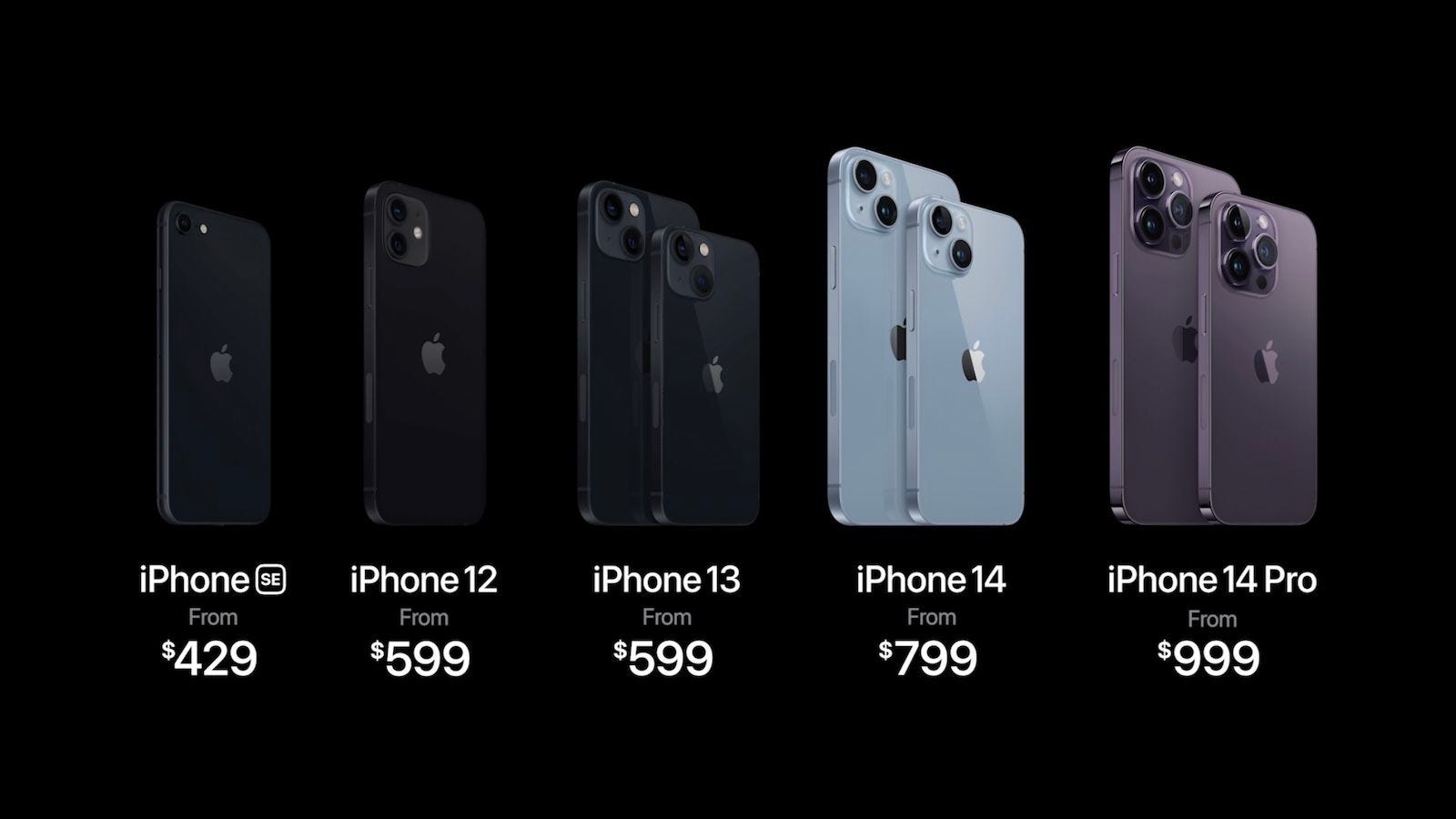The iPhone lineup is a mess: bring back the mini, kill the SE, and introduce the Ultra.
Steve taught us that less is more - focus on quality, innovation, and beautiful design, not quantity and market demographic.
I miss Steve. We all do.
One of the first things Jobs did when he returned to Apple was rethought how the company operates, shifting it from an establishment that was trying to branch out and hit every market demographic to a company that purely focused on beautiful design, rock-solid features, and innovation, and an elite, world-class user experience.
Fast forward to 2022, and Tim Cook's Apple seems to have taken a different approach. Cook has been leading Apple in the direction he sees fit, and comparing Jobs to Cook is unfair. But, the lessons Jobs taught us and the company are worth remembering.
If you head to Apple.com and check out the iPhone section, it's the most confusing lineup the iPhone has ever had. It makes 0 absolute sense, and let's break it down:
iPhone 14 Pro: The highest-end of the iPhone. "The ultimate iPhone," as Apple's marketing gurus call it. This makes sense — one high-end model with everything thrown in at it. Two size options with the exact same cameras, so it's up to consumer preference. +1 point for Cupertino.
iPhone 14 Plus: An iPhone 14 Pro without the Pro. There's a market for this. Not everyone wants the highest-end features in the rather heavy form factor the Pro offers, but they want a larger display with a larger battery. The Plus hits that niche but existing market. It has a 60Hz LCD display, a chip from over one year ago, and costs a ridiculous $899. $899 for a 60Hz phone with a 1-year-old chip.
iPhone 14: The iPhone 14 Plus without the Plus. A 6.1-inch 60Hz LCD display, a one-year-old chip, costs $799. Barely nothing new compared to the iPhone 13 from a year prior.
Now things get ridiculously confusing:
iPhone 13 mini, iPhone 13, iPhone 12: All three models remain in the lineup for no apparent, logical reason:
People loved the iPhone 12 mini and iPhone 13 mini, so keeping the iPhone 13 mini in the lineup for that crowd is logical.
The iPhone 13, why? It's embarrassing how little is new between the iPhone 13 and 14. Photonic Engine? One more GPU core. Action mode. That's about it. It costs $599, $200 less than the iPhone 14. What market is this meant to address? Why still offer it?
Then there's the iPhone 12, cause why not! At $599, it comes with two vertically aligned cameras on the back instead of diagonally aligned cameras. Why is this here? For $200 more, you can get the iPhone 14, and thanks to certain carrier plans, the iPhone 14 is probably cheaper.
Then there's the iPhone SE. A $429 “budget” phone with an outdated design, a 60Hz display starting at 64GB in 2022, almost 2023, has a tiny 4.7-inch screen, and a processor from over one year ago. $429 for all that. Even for people who like the smaller design, there's the mini iPhone; to everyone else, $429 is an insult.
Imagine you're a new customer of iPhone, and you're trying to figure out what model to get; it's nearly impossible. The trim features and changes between each are meaningless to the average customer, yet Apple insists on clogging up the lineup to hit each price point.
It's all part of Cook's plan to ensure that an iPhone fits someone's budget at every price point. It's a noble thing to do, but it degrades the image and reputation of the iPhone when you have models with practically no changes sitting right next to each other with $100 or $200 price differences— it's insulting to consumers and is a confusing mess.
If Steve returned to Apple today, he would entirely revamp the iPhone lineup. It's simple: consumer and professional models. The ideal iPhone lineup should be the following (rough idea):
iPhone 15 Ultra: Starts at $1,099, has a 6.7-inch ProMotion display, Dynamic Island, USB-C, all the camera features (48MP, periscope lens, 8K/60fps), reverse wireless charging, and 2TB storage option. The genuine ultimate iPhone.
iPhone 15: Starts at $799, has a 6.1-inch ProMotion display, Dynamic Island, and USB-C, but misses out on some camera features like the 48MP and periscope lens, caps out at 1TB.
iPhone 15 mini: Starts at $599, has a 5.4-inch 90Hz display, no Dynamic Island, USB-C, dual-camera system, A17 Bionic chip, 5G, and is also offered at 1TB.
Or in other words, if you're Cook:
$1,099
$799
$599
Simple: one high-end model, one consumer-level product, and one entry-level product that suits the market that wants smaller phones. The iPhone SE sees the end of the road, no more Pro or Pro Max, and the mini makes a return.
It's a real shame that Apple is today selling $799 and $899 phones that run at 60Hz when you can get an Android phone for much less that runs at double that.
Will anything change? Maybe. I reported this week Apple is reportedly considering a new strategy for the iPhone 15 lineup, and while that doesn't mean much right now, one could only hope someone with a clear mindset is looking at the lineup and saying something's wrong.
And don't even get me started on the iPad product line…






maye i am breaking every rule by suggesting this but I love the pro and hate the big size of 6.7 so I love having both sizes and if the SE was replaced by a mini I think it would be perfect but I think the price has to be 499 to start with. no 32gb option and the PRO or ULTRA should start at 256GB at the very least if not 512gb
A great piece